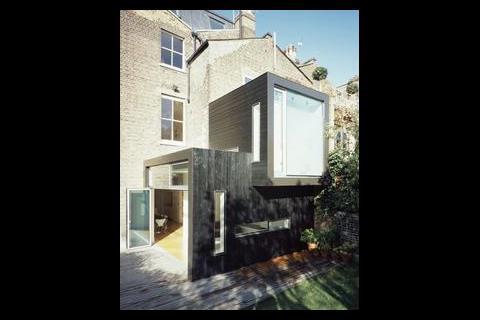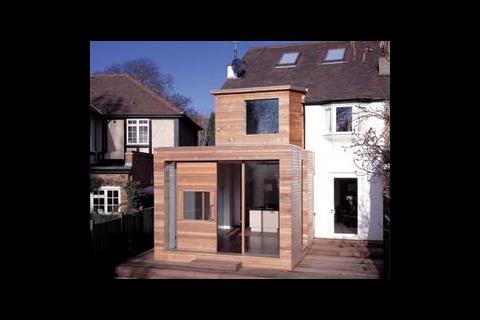New guidance for Part L could prove lucrative for building services engineers - but what does it mean in practice? Darren Ettles, a building control surveyor, explains what he'll be looking for
The Building Regulations are a key part of the Government's arsenal of weapons aimed at achieving the 20% reduction in carbon emissions required by 2010. Until now, the Building Regulations have related to new buildings, which are a fairly small percentage of the total building stock in the UK, so the impact of previous amendments has been limited. But new guidance published to support Part L 2006 has widened the scope of the regulations and now requires upgrades to be undertaken when altering or extending a property.
Potentially the most far-reaching amendment is contained within Approved Document L2B: Work on Existing Buildings other than Dwellings. This amendment now requires thermal improvements to be carried out to an existing building at an additional cost to the proposed work. These additional works are called "consequential improvements" and are likely to create an enormous amount of work for building services engineers. Let me explain.
The general interpretation of this requirement for consequential improvements is that a sum not less than 10% of the value of the principal works must be spent upgrading the existing building. As an example, if you have a budget of £1m to extend your building, the extension should only cost up to £ 909,090, with the remainder being spent on improvements to the existing building.
Although this interpretation is an accurate example of how to achieve compliance, it is attention grabbing and does not consider the detailed guidance in Approved Document L2B. This document states that if the existing building has a useful (heated) floor area in excess of 1000 m2 and you are proposing an extension, or to introduce a new fixed building service, or to increase the installed capacity of an existing fixed building service, you will need to address consequential improvements to achieve compliance with the building regulations.
In reality the impact of this change, when extending, altering or refurbishing an existing building will be largely dependent on the existing and proposed external lighting, space or water heating systems, air-conditioning and mechanical ventilation - and as a result, the M&E consultant's input.
Work needed for an extension
For an extension, consequential improvements not less than 10% of the value of the principal works should be spent on measures such as:
- Upgrading heating, cooling or air-handling systems more than 15 years old
- Upgrading general lighting systems that cover an area in excess of 100 m2 that has a lamp efficiency of less than 40 lamp-lumens per circuit-watt
- Installing energy metering
- Upgrading thermal elements with poor U-values
- Replacing existing windows to achieve a U-value of 3.3 W/m2K
- Increasing on-site low and zero-carbon energy generating systems to provide at least 10% of a building's energy needs.
In our £1m budget example, the energy savings generated by the consequential improvements should realise a £555 per month saving for the next 15 years - which totals 10% of the budget. If this can be achieved, the improvements are economically viable and should be carried out. Conversely, if there are insufficient carbon savings to justify the work, then those improvements should not be carried out.
The way the document is written allows building services engineers the opportunity to save their clients money. This is because Part L has been written to help achieve the government's 20% reduction in carbon emissions and not to increase construction costs by 10%. Therefore, by focusing the goals of consequential improvements back on energy efficiency, given our example above, all engineers should be doing is to reduce energy consumption by at least £555 per month. If building services engineers can achieve this saving by spending a lesser capital sum, then they will have achieved a more cost-effective means of compliance than asked for by the Building Regulations and have saved their client money.
Getting the right advice from building services engineers at the right time will be essential in getting an initial sign-off from building control
In the list of suggested improvements above, it will be noticeably easier to improve the energy efficiency of the buildings services than to attempt to reduce the thermal conductivity of a wall from a U-value of 0.75 to 0.35 W/m2K. And in most instances, improvements to services can reap the greatest benefit with the least disruption to occupants and accommodation.
In demonstrating compliance with the requirements for consequential improvements, if there are no reasonable measures that can be taken to achieve these figures, this means one of two possible scenarios. Either the building is already reasonably energy efficient and any improvements can only reduce energy consumption by a marginal figure - so nothing needs to be done - or the building systems are so poor that the high cost of replacing the required plant and infrastructure cannot be recouped by the savings made from reduced fuel bills - so once again, nothing needs to done.
When considering the installation of a new fixed building service - or where the installed capacity of a fixed building service is being increased - the part of the building that is to be served by that service must be suitably insulated. For example, when a heating system is introduced to an existing building, the fabric of the building must be upgraded to achieve standards equal to that of a newly erected building to ensure that the heating system can run at a reasonable level of energy efficiency. However, for upgrades to the lighting, for example, the requirements will be considerably less onerous because getting a lighting system to work efficiently does not require the building envelope to be upgraded.
Burden for city regeneration
In addition to these significant additional costs, further consequential improvements must also be carried out akin to those for a building extension. As a result, the combined financial burden of improving the insulating envelope as well as upgrading existing plant and services may significantly affect the viability of renovating the dilapidated building stock that exists in many cities, with the potential to jeopardise many regeneration programmes.
Initially, the impact of these consequential improvements looks very onerous - even fatal for some projects. But the aim of any development should be to comply with all relevant legislation, to provide the occupants with a suitable working environment and the owners with economic running costs. To this end, we can now benchmark buildings and ensure that during their expected life, their running costs will not cost the earth - if that's not too dramatic.
In any project, the importance of addressing consequential improvements as early as possible cannot be overstressed, particularly as many planning departments now insist developments meet strict green criteria. Getting the right advice from building services engineers at the right time will be essential in getting an initial sign-off from building control.
For a building control body to assess and approve a proposed extension or alteration that affects the fixed building services, the assessor must be provided with a consequential improvements strategy which should include a fiscal breakdown of the 15-year saving. How much needs to be spent will depend largely on three key elements; the existing building, the skill of the M&E consultant and whether or not your building control provider has read this article.
Source
Building Sustainable Design
Postscript
Darren Ettles is area manager for approved inspector, Regional Building Control Ltd.
























No comments yet